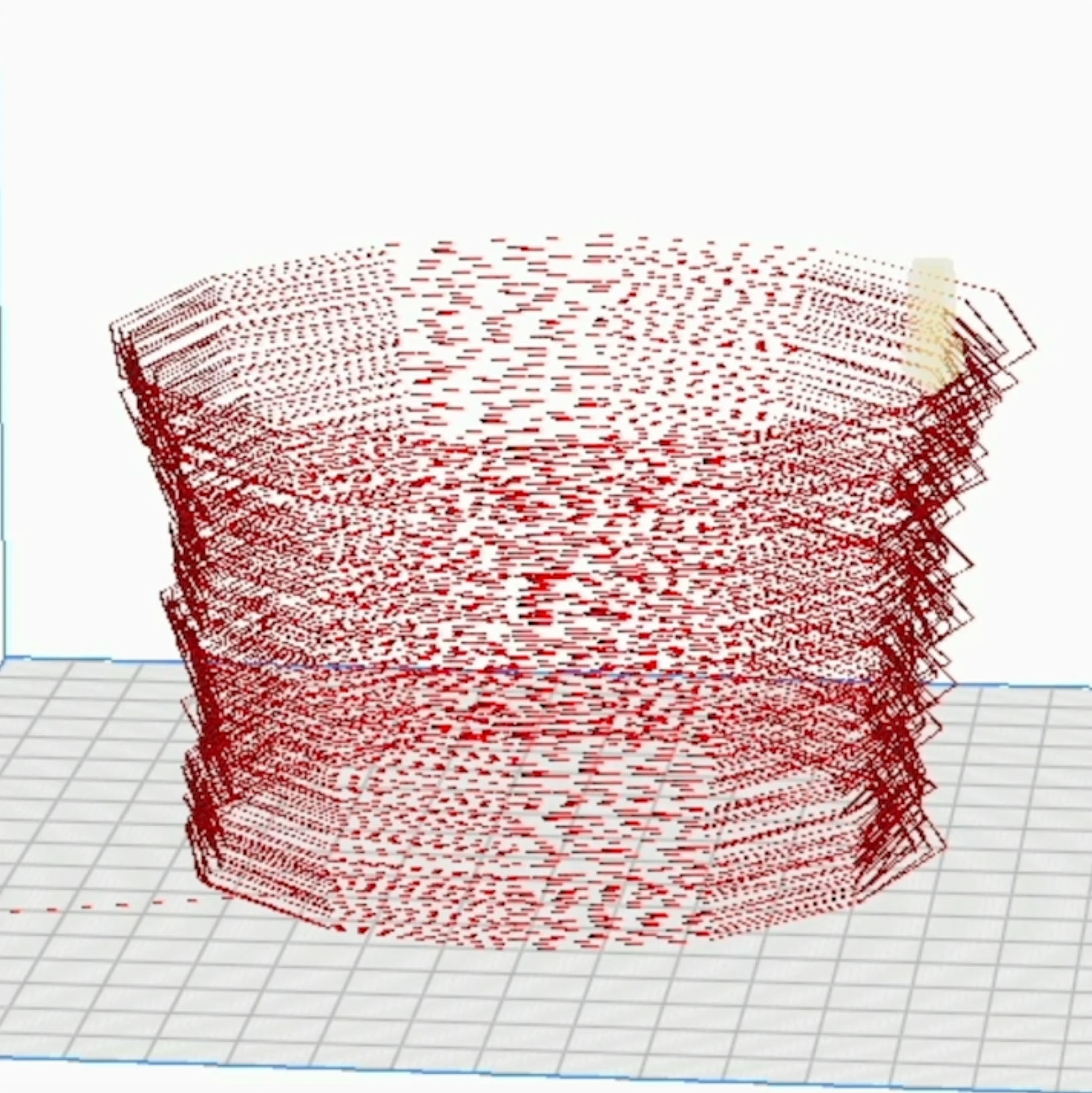
Ilsy Jeon, creative director and writer at MoCA/NY, speaks with Kiichi Takeuchi about his latest 3-D clay-printed project "Not For Tomato Soup Cup (Global Warming Cup)" and the intersection between ceramics and technology.
Originally from Japan, Kiichi moved to the US in 1998 to study computer science and has worked as a software developer for more than 23 years. He works at the Long Island University where he also studies ceramic art. At NCECA’s 2023 Conference, Kiichi presented his talk Clay Fab Lab: Scan and Print 3-D in Classroom.
IJ: So Kiichi, you have an extensive background in computer science, and I’m curious about your trajectory into developing a ceramic practice. Did 3-D clay printing introduce you to ceramics or did you start with clay building and decide to move towards integrating technology?
Kiichi Takeuchi: The actual answer is yes for both. Somebody just called me a techno potter. I don’t know what that means [laughs], but I started with very, very basic hand-building and wheel throwing. In 2022, the department purchased our first 3-D clay printer in our Craft Center, and I was assigned to lead a study group and research and figure out how it works and make it useful to the classroom. My boss points his finger at me, “You, your computer guy, you take care of this.” Then, the challenge [was to] learn about 3-D clay printers. It's a little bit different from the 3D plastic printer.
IJ: I do love that term—techno potter. What would you say is the major difference between working from hand versus a 3-D printer?
Kiichi Takeuchi: If you look into the perspective of complexity and craftmanship, they [are] actually very similar.
When people watch those time-lapse videos of the clay printer it looks like magic. However, when you're trying to print by yourself, it's a lot of like manual configuration and all sorts of tricks and techniques I have to learn. Even like cleaning a printing printed nozzle, there is some techniques to it. So in a sense, the 3-D clay printer is a little bit more technical than the electric wheel. However, it still needs a lot of manipulation by artists and that's the room that we can expand the horizon.
So, [regarding] my work “Not for Tomato Soup Cup” (Global Warming Cup), the spiral shape, that’s all adjustment and trial and error results and I did a lot of experiments. So it’s not like you turn on a button and it’s like magic. It’s not.
IJ: Regarding your piece “Not for Tomato Soup Cup,” you’re referencing the recent controversial protests against global warming where “activists" threw tomato soup at paintings in museums. Why did you reference this in your title?
Kiichi Takeuchi:I usually try not to step into political arguments but here it’s just my honest reaction to the art scene. To explain how I titled the cup, I need to explain my background. So after [studying] computer science, I took Earth Science courses. I pretty much spent the time to study the scientific aspect of global warming and the research, all the lies and the truths in the data.
And what I wanted to indicate here is, yes, global warming is happening and we have to take action against it and that's a major issue, however, those activists who threw the tomato soup at the masterpiece…that’s a kind of overwhelmed reaction to me.
IJ: It's more stirring a spectacle and creating hoopla rather than inviting people to have a genuine and productive conversation?
Kiichi Takeuchi: Exactly. So, to me, that's just like a counter-reaction to put it in the title.
IJ: And do you have other 3D printing projects in development?
Kiichi Takeuchi: Yes, I'm going to pitch one idea extending this global warming cup. This is the concept of generating [a] functional cup, so an actual cup that you can generate from abstract to numerical data. These are just numbers. I want to apply the same concept to any data.
For example, let's say you can quantify music data, like, classical music or jazz.
So if I print the jazz versus the classical music, how do they look different? Because obviously the classical music has more, let's say variety of instruments versus jazz [which is] composed with, the saxophone, drums, guitar, and piano, very simple. So the frequency distribution in the sound may be different. So that’s what I want to explore.
To learn more and explore Kiichi Takeuchi's works, CLICK HERE.